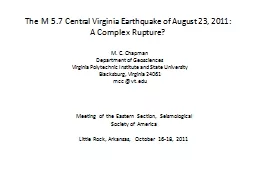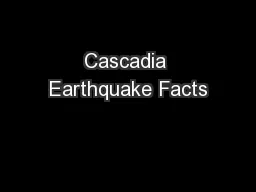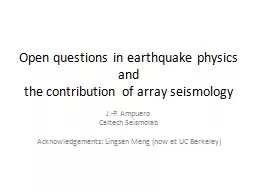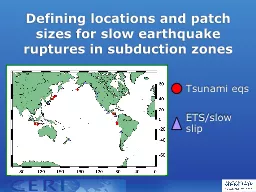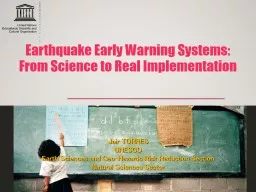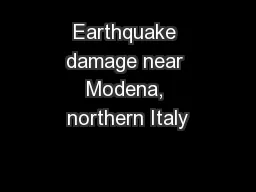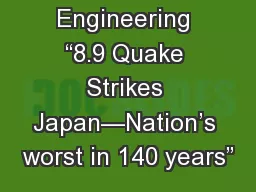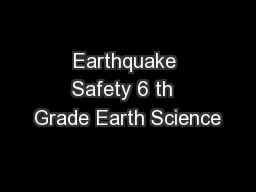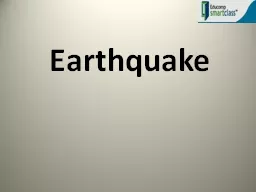PPT-The M 5.7 Central Virginia Earthquake of August 23, 2011:
Author : marina-yarberry | Published Date : 2016-05-14
A Complex Rupture M C Chapman Department of Geosciences Virginia Polytechnic Institute and State University Blacksburg Virginia 24061 mcc vtedu Meeting of the Eastern
Presentation Embed Code
Download Presentation
Download Presentation The PPT/PDF document "The M 5.7 Central Virginia Earthquake of..." is the property of its rightful owner. Permission is granted to download and print the materials on this website for personal, non-commercial use only, and to display it on your personal computer provided you do not modify the materials and that you retain all copyright notices contained in the materials. By downloading content from our website, you accept the terms of this agreement.
The M 5.7 Central Virginia Earthquake of August 23, 2011:: Transcript
Download Rules Of Document
"The M 5.7 Central Virginia Earthquake of August 23, 2011:"The content belongs to its owner. You may download and print it for personal use, without modification, and keep all copyright notices. By downloading, you agree to these terms.
Related Documents

